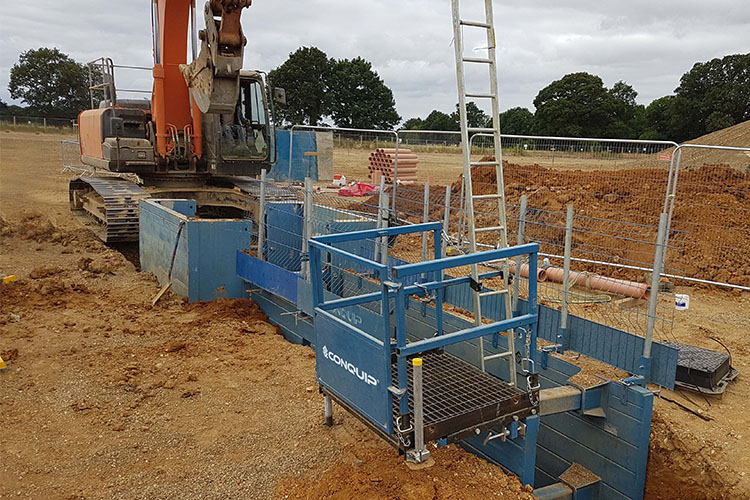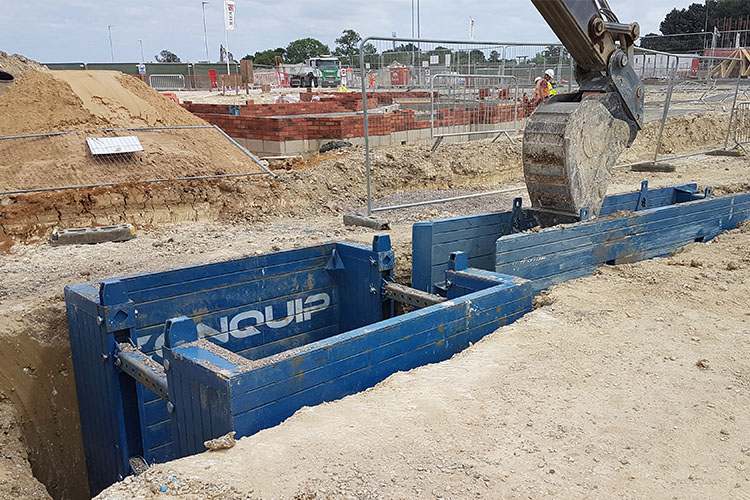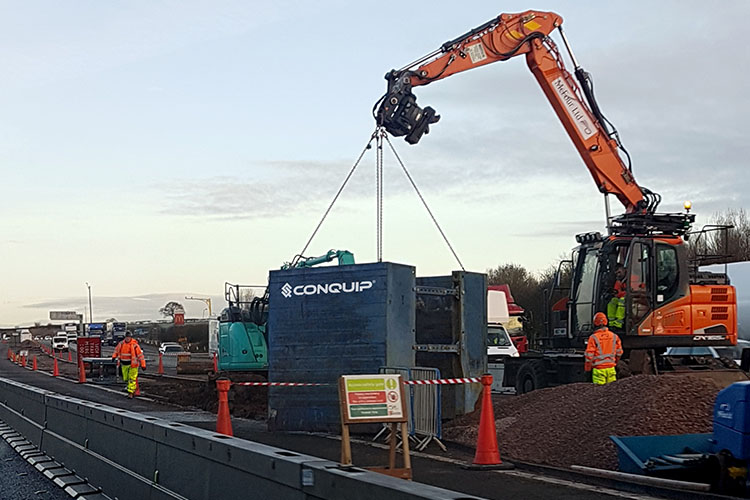The Trench Shoring equipment on offer today provides a greater choice of boxes for groundworkers. However, determining the most suitable box for an application can present its own selection headache.
In this blog we investigate the types of box that are available, the application they are best suited for and common installation techniques.

Choosing the correct box
To carry out groundworks on infrastructure projects, excavations are dug to install utilities, such as: gas and water pipes, electricity cables, and phone lines. Utilities all have varying ‘safe’ recommended installation depths.
However, these can change depending on site-specific requirements. Clear as mud? OK, let’s investigate further…
If the depth of the excavation is one factor that impacts the choice of box, what are the others?
Geotechnical Information
Speaking of mud, geotechnical information, including the type of soil, is one of the factors that can determine the most suitable excavation. Geotechnical engineers review soil types (sand, clay, silt etc) before carrying out a ground report. By determining the soil type, they can calculate how deep groundworkers can safely excavate and how steep the angle of the surrounding slopes can be. This prevents injuries and loss of life from potential ‘excavation cave-ins’.
Weather
Adverse weather conditions like heavy rainfall, are common in the UK, especially in the Winter months. This can lead to soil deterioration, increasing ground pressure and causing the collapse of a trench. Shoring equipment, such as, Trench Boxes or Drag Boxes, act as transportable shields designed to prevent trench collapses.
Temporary Works Calculations
A ground report, the weather, existing infrastructure, and site-specific conditions, will all form part of the design brief for the temporary works requirement to carry out an excavation. A qualified engineer will then create a temporary works design, using calculations to specify the minimum loadings and required equipment to excavate safely and protect site operatives. The most suitable box for the excavation will be dependent on the results of the temporary works calculations.
Trench Depth, Application & Excavator Capacity
Trench depths vary depending on the application and the utility being installed. For example, in the UK, the recommended depth for installation of electrical cables is 600mm, gas pipes 700mm and water pipes 750mm.
However, this depends on the application, where the trench is located and what other utilities are already in place. The capacity of the lifting apparatus is also a contributing factor as to the choice of box. It is rare for smaller sites to have access to cranes, so the most common installation of shoring boxes is with an excavator.
Some excavators do not have the capacity to lift fully assembled Trench Boxes and Manhole Boxes in and out of excavations so in these circumstances, our Lightweight Shoring Box range, sometimes referred to as backhoe boxes, are the ultimate solution.
Let's take a look at our range...
TRENCH BOX
The most-commonly used and the first type of shoring box to be used in the UK. Generally suitable for trench depths of over 5 metres, the Conquip Trench Box is ideal for installing utility pipes where ground movement is not critical.
Often installed by an excavator of 13 tonne or greater capacity, a fully assembled base box weighs up to 2,498kg.
Lightweight Trench Box
The Lightweight Trench Box, or Backhoe Trench Box, is more suited to for shallow-depth trenches or for excavators with limited lifting capacity.

MANHOLE BOX
Manhole Boxes offer ground support when forming concrete manholes or bringing multiple services into a central location. Similar to the Trench Box in their design and installation, Manhole Boxes are generally suitable for depths of over 5 metres.
Due to the C-shaped panel design, Manhole Boxes are a lot heavier than Trench Boxes and normally require a 20 tonne (or larger) capacity excavator to install or extract from the ground.
Lightweight Manhole Box
Ideal for use with smaller excavators or potentially backhoe excavators. The Lightweight Manhole Box is generally suitable for trench depths of up to 3 metres.

DRAG BOX
The Drag Box is designed to provide local support in a trench as it is excavated and the pipeline is constructed. It is often used in non-urban areas for laying long pipelines.
The method of using a Drag Box is very different to using a Trench Box or Manhole Box. It is designed to be ‘dragged’ into a pre-excavated trench to lay that section of pipeline and then once that section is complete, the box is dragged forward, and the excavator can backfill behind it.

Installing Shoring Boxes
There are various ways to install shoring boxes. These are site-specific and depend on both the application and the machinery available. The most common method for installation is via an excavator due to the rarity of cranes on groundworks sites, especially those in rural locations.
'Dig & Push'
In the UK, Excavator Operators predominately use a method called ‘dig and push’. This is where a guide trench with a depth of around 1m is excavated and the shoring box is lowered inside. The operator firstly digs within the faces of the box panels and then uses the back of the bucket to carefully push down on the top of each box panel to install it in the ground. This process is repeated until it is 90cm above ground and then either an extension box or edge protection is installed, to ensure site operatives cannot fall into the trench.

Lifting Chains
Another installation technique more commonly used where ground conditions are hard and unforgiving is to excavate an area slightly bigger than the box, before lowering the box using lifting chains. These conditions mean using the ‘dig and push’ method could damage the shoring equipment due to the excessive force required to push the boxes down.
This is similar to the way that the Drag Box is first installed, before it is then dragged forward.

What other trench shoring equipment do we offer?
Our Trench Shoring range is far more expansive than just boxes. We also supply:
- End Panels
- Trench Sheets
- Manhole Shutters
- Trench lining support
And much more…






